What are the best facial oils for gua sha you ask?
Well, first if you’re not familiar with gua sha, I’m excited to tell you about one of my favorite natural beauty secrets. Gua sha is a massage, soothing beauty practice from ancient China. It is widely used in Traditional Chinese Medicine today. It involves massaging (or “scraping”) your face and body with a small, rounded board that fits in your hand. Don’t be alarmed when you hear about “gua sha scraping” – it’s a gentle movement that makes you feel soothing and calming.
Before we get to the best gua sha oils, a brief explanation of Gua Sha as a technique is in order for those who may not be familiar with it. If you want to get straight to the oil recipes, they are at the end of this article for quick reference 🙂
What is Gua Sha good for?
Gua sha is a form of massage that relaxes and soothes the muscles, along with fascia – connective tissue in your face and body. It also helps drive traffic in your lymphatic system, which helps your body to detoxify more effectively. It includes a series of gentle movements designed to release tension and promote circulation.
If you are interested in getting started with gua sha, try this coaching school which I really liked.
Benefits of a Gua Sha Facial
Gua sha, done regularly, helps your face and body look smooth and toned and leaves behind a glowing, healthy complexion. This is because it is able to release deeper tension than facial rolling or massaging. These are valuable tools and techniques in a skin care routine, but if you feel that your facial muscles have been carrying stress or tension for a period of time, the release mechanism of gua sha exercises is second to none.
Some people like to use gua sha to massage the scalp, which can help stimulate the hair follicles. There are special gua sha tools with comb tips that are perfect for this technique.
By far the most popular beauty technique is the use of gua sha for a face which can be done to help ‘face slimming’ and has a number of other benefits. This is a secret technique that many models have reported using to achieve more sculpted cheekbones and jawlines. This is because it helps promote the release of excess fluid from the face to strengthen the underlying bone structure. It has many other benefits, including smoothing wrinkles, eliminating puffiness, and helping your skin absorb more nutrients from your skin care products.

You might be wondering, “what is the best gua sha tool?” There are many great boards or tablets available at different price points. The gua sha tool itself can be made from different materials and comes in specialized shapes. There are many options ranging from smooth semi-precious stones or ceramics, to soft wood, to stainless steel cooling. If you are new to gua sha, I recommend the basic “heart” shaped gua sha board as it is easy to use, easy to hold and can be used for many different massage techniques with a single tool.
Here is a list of my favorite gua sha tool materials that I have tried:
- Rose quartz
- White quartz
- Jade jade
- Bian stone (a mineral-rich stone popular in Traditional Chinese Medicine)
- Ceramic
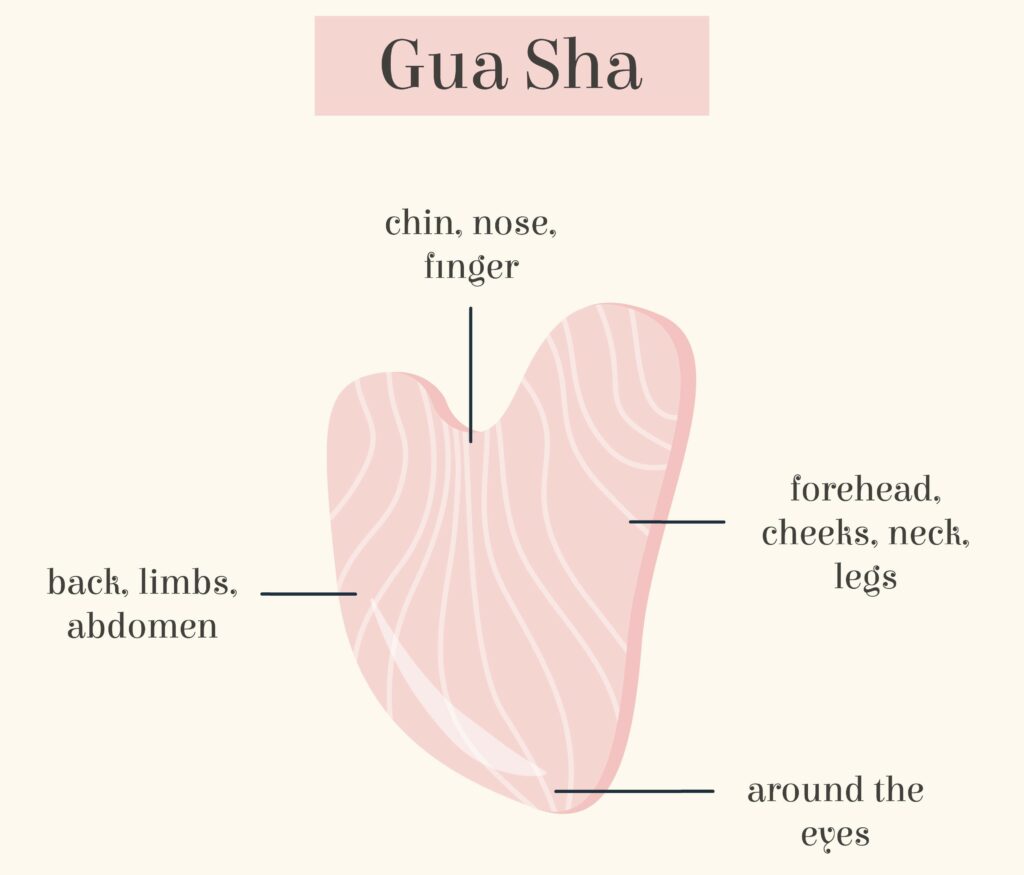
The good news is that you don’t have to spend a fortune to get a quality tool, with plenty of good, affordable options on the market now. Please note that there are some materials that are not recommended, such as wood or plastic. Wood can occasionally be used if it is properly sealed and can withstand repeated washings. (It’s best to wash your gua sha tools as you would your makeup brushes or other beauty tools.) Other plastic-based massage tools aren’t bad, but I find that natural materials provide a subtle but gentle edge to your gua tool sha that releases properly tensioned fascia without breaking down over time.
6 DIY Facial Oils for Gua Sha
Below are 6 easy DIY oil recipes that are perfect for gua sha!
Note: While these are geared towards skin types, most natural butters, oils, waxes and herbs can be used widely by a range of skin types, barring any personal sensitivities one may have to specific ingredients. So if you see a recipe that looks good to you, don’t hesitate to try it even if it’s not for your specific skin type. Skin is often sensitized by harsh artificial ingredients and can improve over time after switching to gentler natural ingredients with more nutrients.
As always, if you’re not sure if an ingredient works for you, do a patch test for 24 hours before use. These oil blends are great for the face, but can also be used for gua sha techniques for the body and scalp.
For recipes that call for infusing dried flowers, you can either do a quick method that involves infusing the flowers in oil over low heat for two hours in a double boiler, or infuse them at room temperature for anywhere from two to six weeks (see tutorial here for further information on each of these methods).
Chamomile Infused Rosehip Oil for Normal Skin:
Rosehip oil is a powerhouse oil packed with antioxidants. It has natural vitamins A and C to promote cell renewal and does not clog pores. Chamomile is a soothing flower that provides vitamins and minerals to the skin to keep it balanced. Together these make a powerful combination that is great for normal skin and safe for all skin types.
- Combine one cup of rosehip oil with ¼ cup of chamomile flowers.
- Fill with your preferred infusion method (for more information on how to do this, check out this tutorial here).
- Optional: You can use 5 drops of chamomile essential oil as a substitute to infuse the oil with chamomile flowers. If you do this, skip step #2 and just mix the essential oil with the Rosehip in the bottle of your choice.
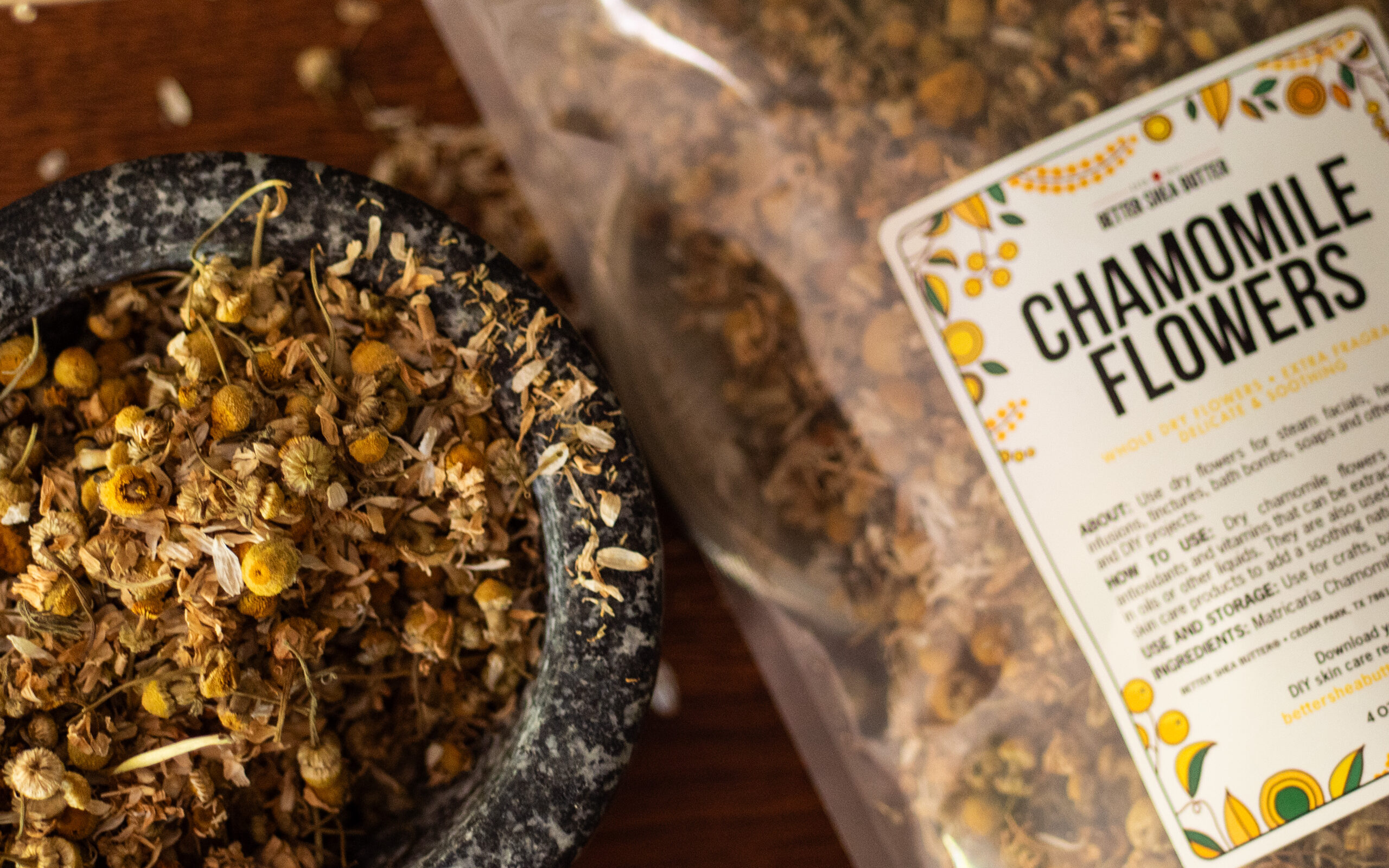
Almond oil with rose for dry and combination skin types:
Almond oil is known for its healing and soothing properties. This is due to the high levels of fatty acids and minerals that help restore the skin barrier. Roses are also very good at repairing the skin and supporting cell regeneration.
- Combine one cup of almond oil with ¼ cup of rose petals.
- Fill with your preferred infusion method (for more information on how to do this, check out this tutorial here).
- Optional: You can use 5 drops of rose essential oil as a substitute to infuse the oil with roses. If you do this, skip step #2 and just mix the essential oil with the almond oil in the bottle of your choice.
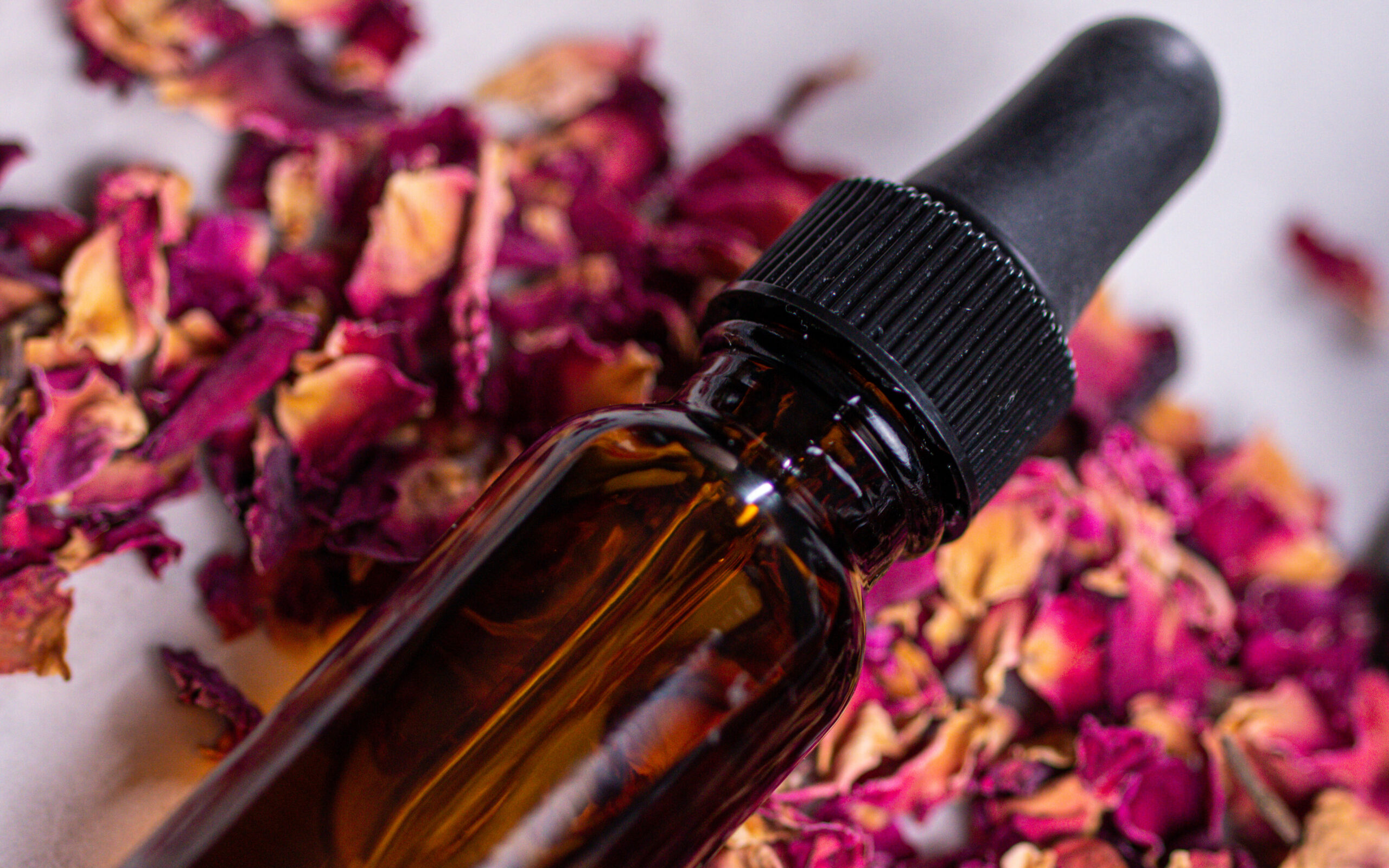
Calendula Infused Apricot Oil for Sensitive Skin (safe for mature and baby skin):
Apricot kernel oil contains beneficial fatty acids that help hydrate sensitive skin and support cell renewal. Calendula is a beloved flower in the marigold family that is extremely gentle and known for its wound healing and soothing natural nutrients.
- Combine one cup of apricot oil with ¼ cup of calendula flowers.
- Fill with your preferred infusion method (for more information on how to do this, check out this tutorial here).
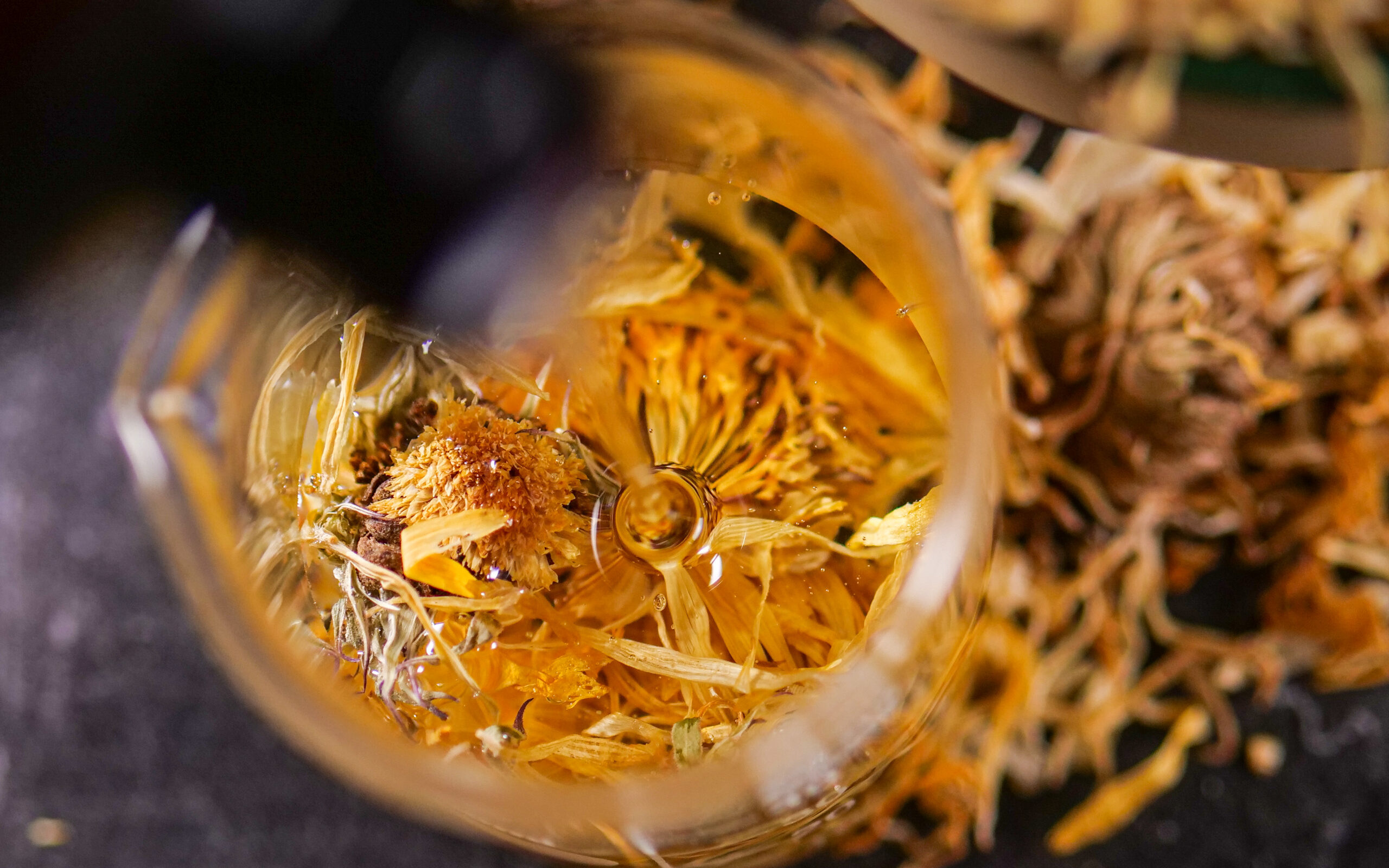
Ylang Ylang Jojoba Oil for oily, acne-prone skin
Did you know that Jojoba oil is good for almost every skin type? This is due to its similarity to the skin’s natural oil, called sebum. It is perhaps the most balancing carrier oil out there, providing moisture to dry skin types and helping to reduce oil production in oily skin types. Ylang Ylang is a balancing essential oil from a tropical flower that helps rejuvenate the skin and provides antimicrobial properties.
- Combine one cup of jojoba oil with 5 drops of ylang ylang essential oil.
- Shake well to combine in your favorite dropper.
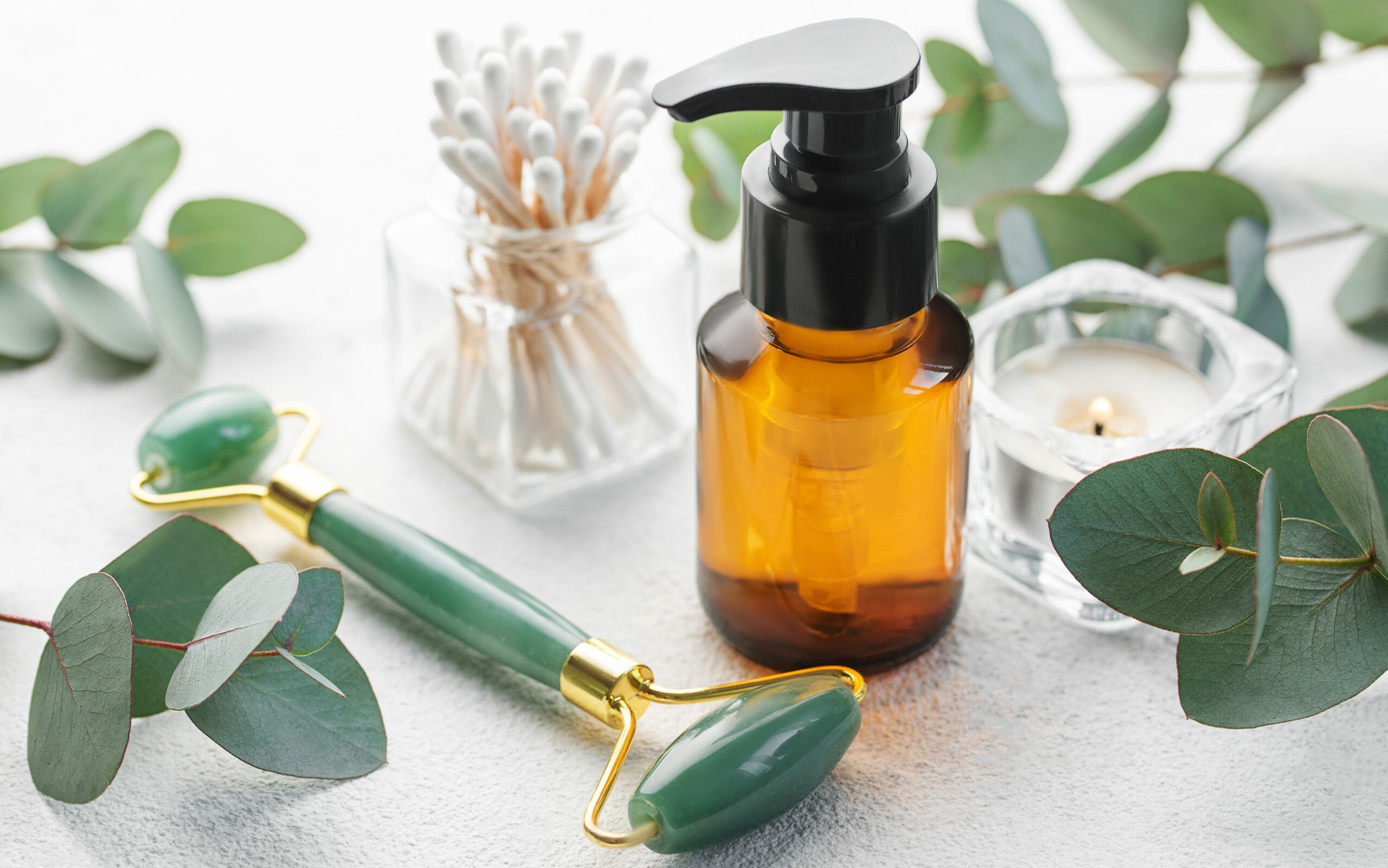
Argan Oil with Elixir for Damaged Skin
Argan oil contains high levels of vitamin E, an antioxidant that reduces inflammation and boosts skin cell regeneration and collagen production. Helichrysum oil reverses the effects of stress and pollution on the skin by neutralizing harmful oxidation molecules.
- Combine one cup of argan oil with 5 drops of Helichrysum italicum essential oil.
- Shake well to combine in your favorite dropper.
Lavender infused olive oil for after sun care
Antioxidants and nutrients in olive oil help soften the skin after sun exposure and encourage the skin’s repair process. Lavender flowers promote wound healing and restoration of the skin barrier.
- Combine one cup of olive oil with ¼ cup of lavender flowers.
- Fill with your preferred infusion method (for more information on how to do this, check out this tutorial here).
- Optional: You can use 5 drops of lavender essential oil as a substitute to infuse the oil with lavender flowers. If you do this, skip step #2 and just mix the essential oil with the olive oil in the bottle of your choice.
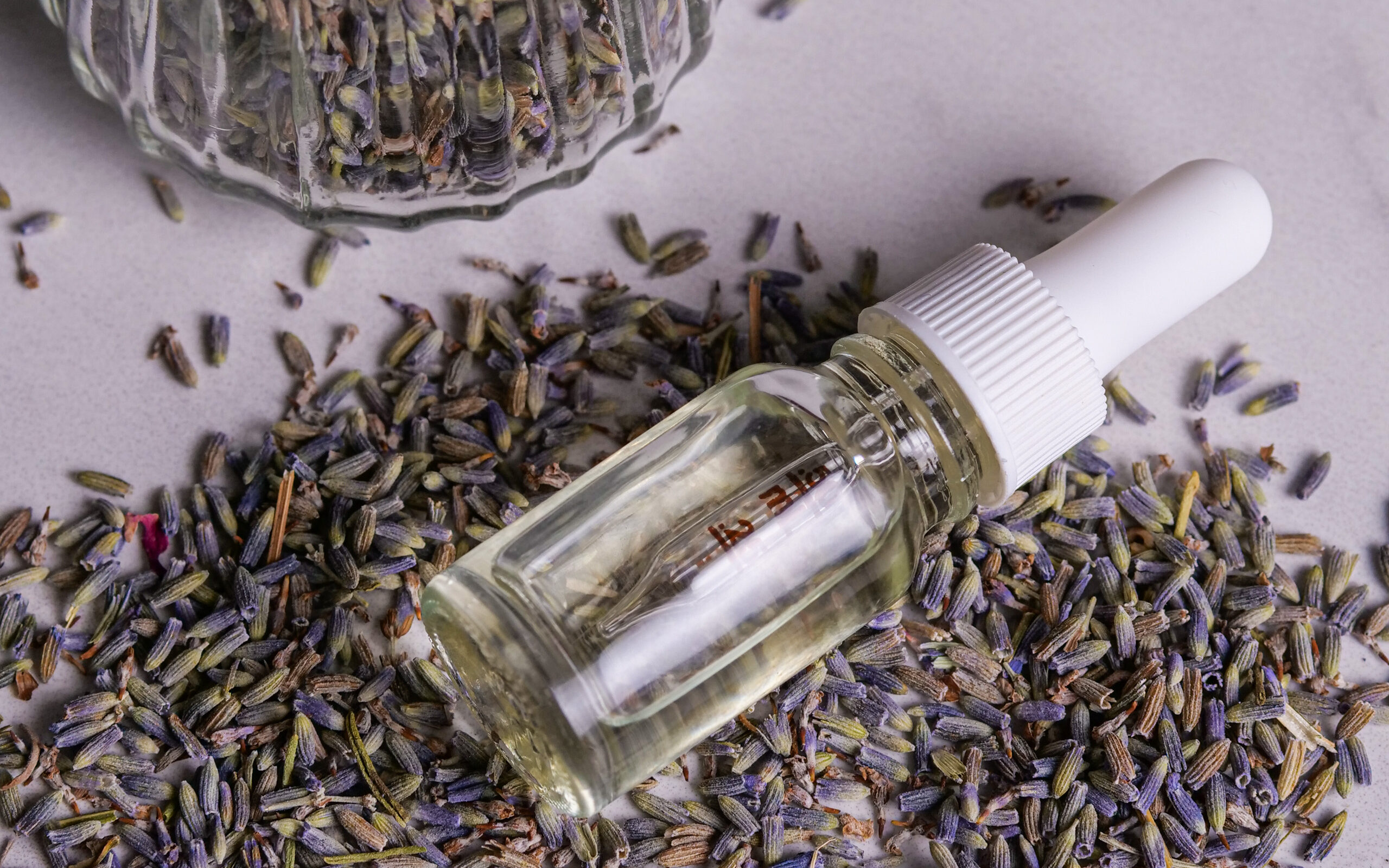
I hope you enjoyed this look at gua sha skin care techniques and these gua sha facial oil recipes. As always, comment below if you have any questions or comments.
Author: Natalie, DIY Skincare Enthusiast
